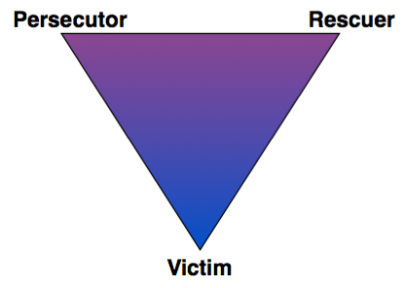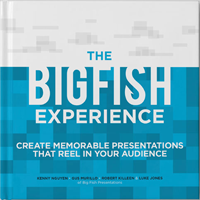Introduction to Characters [An excerpt from “The Art of Storytelling”]
We’d like to share with you an excerpt from our up-and-coming e-book, “The Art of Storytelling.” This is a section from a chapter about Character.
Check it out, and let us know what you think!
In 1968, Dr. Stephen Karpman wrote an article entitled “Fairy Tales and Script Drama Analysis.” This article included what is today known as the Karpman Drama Triangle. This triangle, illustrated below, is made up of three elements: The Persecutor, The Rescuer and The Victim.
The persecutor, or Villain, is the character in stories that attempts to coerce or attack the victim. The victim is oftentimes the recipient of torment or distress caused by the persecutor and must be saved and protected by the rescuer, or Hero. It is up to the rescuer to intervene between the persecutor and victim in order to bring balance.
Now, the Karpman Drama Triangle is mostly used for psychological purposes. However, we have chosen this model to illustrate the characters in storytelling because it provides a visual, scientific reference.
For our purposes, we will only use the Hero (Rescuer) and the Villain (Persecutor) as well as the previously mentioned Storyteller.
Now, I know what you’re going to say. Not every story has these three. What about simple stories? What about a fairytale? Like, um, Humpty Dumpty?
The story goes:
“Humpty Dumpty sat on a wall,
Humpty Dumpty had a great fall.
All the king’s horses and all the king’s men
Couldn’t put Humpty together again. “
Who’s what you say? Who is the hero, the victim and the villain, you say?
Take a moment and attempt to assign character roles for this story.
Let’s see how you did.
The answer: Mr. Dumpty is the victim and villain. The king’s horses and men are the heroes.
Humpty is the victim because he has fallen from his beloved wall and put himself in a situation of mortal peril.
Humpty is also the villain.
No, Humpty isn’t suicidal. His demons aren’t haunting him. No, Humpty is simply arrogant. His position on the wall is a metaphor for the great pride before the “great fall.”
I won’t get into too much depth on the power of metaphor in fairytales, but I will tell you that the king’s horses and men are the heroes, despite failing to fix the problem. No one can cure Humpty’s massive ego.
You see? It can be done with any story. Every tale that exists follows this model, whether vague or explicit.
Take a look at the diagram again. Do you notice how the triangle is upside down? The Villain and the Hero are on top, battling each other for the sake of the victim. The victim, while seemingly unimportant to the other two characters, gives them purpose. Without something to fight for, the Hero and Villain would have no reason to face-off. The role of the victim is essential in understanding classic storytelling.
However, in this book we classify you as the storyteller, your audience as the hero and the problem as the villain.
So, now that we have set up the general scope of the characters, let’s get started actually telling the story. It’s time to put ideas into action and tell a story that will inspire the heroes in us all.
So, what did you think? Leave us some feedback!
Tweet us, e-mail us, or simply comment below!
“The Art of Storytelling” will be released VERY soon, so stay tuned!






Share your opinion.